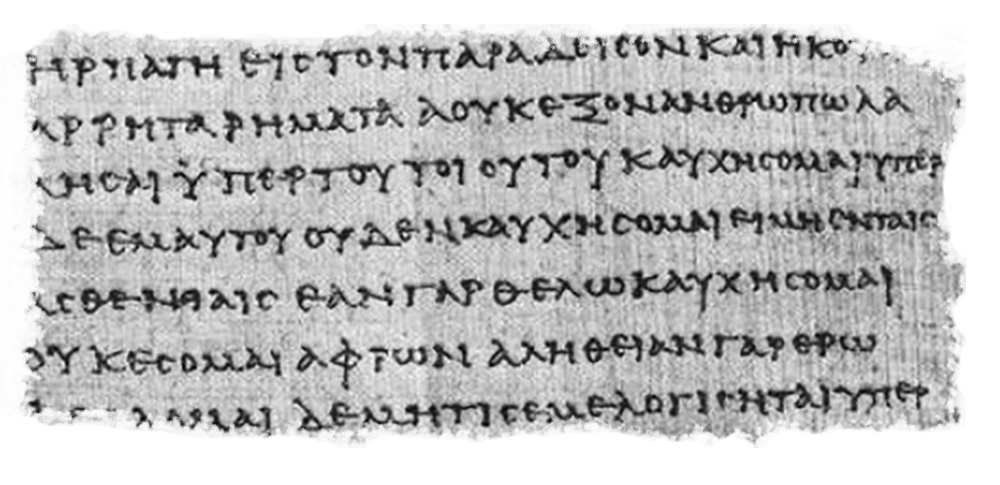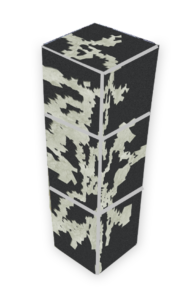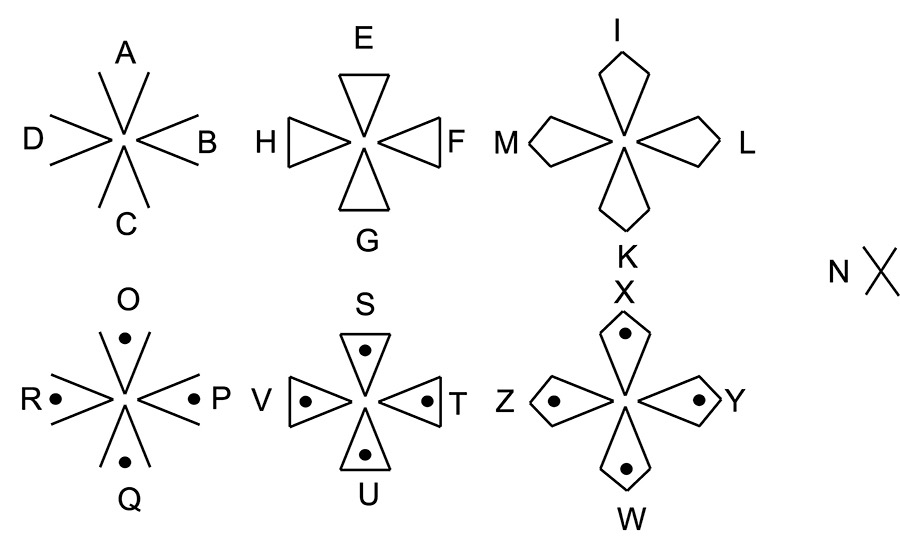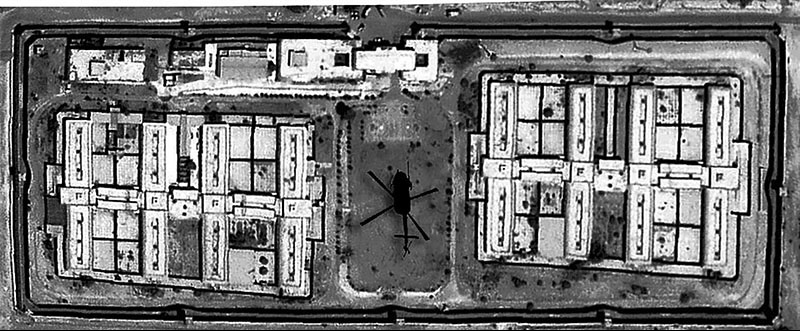Images Appearing In My Books
By popular request, following are all relevant images from each of my books for closer inspection. As many Kindle users realize, it is often challenging to make out images on most Kindle devices (and in some printed books), so hopefully this handy reference helps readers.
CLICK ON EACH IMAGE TO ENLARGE IT.
The Magdalene Deception
Chapter 31
. . . Dominic turned to one of his reference books for comparable examples of first-century Koine Greek in the Byzantine era, with which to analyze the Magdalene manuscript. He noted one of them was quite similar . . .
This is an excellent example of the ancient Koine Greek language, which lacked punctuation and inter-word breaks, so all words ran together as you see it here.

The Magdalene Reliquary
Chapter 8
. . . “Well, now that you ask … ” Dominic began, then laid out the strangely shaped document he found buried among de Sonnac’s materials. “I have no clue what this could be. Have you ever seen anything like it?” . . .
Though I created the cave map depicted here, this is an actual puzzle format created by Pantazis Houlis, also known as “Pantazis the Megistian” from the Greek island of Kastellorizo, used in the book with permission.

Chapter 13
. . . Dominic and Dengler watched in fascination as the once flattish map took on a new shape, that of a square cylindrical tower.
“… and Voila!” Hana said proudly, “I ended up with this!” . . .
The above puzzle does indeed end up in this cylindrical configuration once assembled, again with thanks to Pantazis Houlis.
The Magdalene Veil
Chapter 6
. . . Hana paged through the first Himmler biography seeking details of Wewelsburg Castle and the SS commander’s penchant for the occult. She paused over the many photographs of the castle: its unusual triangular footprint on the diminutive town’s landscape, the many mystical halls within, and especially the tall forbidding tower at the north end. One image in particular caught her attention: a large runic “Black Sun” mosaic inlaid on the marble floor of the Generals’ Hall in the North Tower, a dark symbol of Aryan brotherhood . . .
The actual Schwarze Sonne symbol as it appears on the floor of Germany’s Wewelsburg Castle even today.

The Vivaldi Cipher
Frontmatter
Venice has six main districts (“sestieri“). Each sestiere has its own unique characteristics, landmarks, and attractions. Additionally, Venice includes other islands in the Venetian Lagoon, such as Giudecca, Murano, Burano, and Lido, which are not considered part of the six main districts.

Chapter 6
. . . Using musical composition software on her laptop, Livia had overlaid Vivaldi’s staffs, clefs, and notes from the image Hana had sent her, which then assigned each note its appropriate scale degree. The result on the laptop display produced a four-line stanza in what appeared to be a continuous string of Italian words . . .
The Petrus Prophecy
Chapter 19
. . . Standing on the top step of the ladder while Dominic held it steady, Hana inspected the keystone carefully… “There appears to be a ring of eight letters on trapezoidal blocks around the central square and compass symbol. Angus said there was a combination, right? It must have something to do with the letters . . .”

The Avignon Affair
Chapter 17
. . . Surrounded by beautiful stained glass windows behind a semi-circle of towering marble columns lay the impressive black marble sarcophagus of Pope Clement V, clearly the main attraction in the sanctuary. Everyone gathered around it. There was a wide pedestal, the more narrow crypt itself standing three feet above it, and then the top, or crown, which was about four inches thick. Intricately carved on the top of the crown was an effigy of the pope lying on his back in eternal repose, his head resting on an embroidered pillow, all in beige marble. His arms were crossed over his chest. It appeared that the head and pillow had been separated at some point in the past, and the top of the pope’s face had been cleaved from the top of his head down to an ear . . .

The Jerusalem Scrolls
Chapter 14
Some thirty kilometers southwest of Amman, Jordan’s capital, lies the ancient Bronze Age city of Madaba. Mentioned several times in the Bible, the city is now widely recognized for its spectacular Byzantine and Umayyad mosaics, most notable among them the oldest known map of the Holy Land, and particularly Byzantine Jerusalem . . . Laid down piece by piece in the sixth century on the timeworn floor of what is today the Greek Orthodox Basilica of Saint George, the Madaba Map features some two million colored stone tiles vividly depicting villages and towns in Palestine and the Nile Delta, including hills and valleys, buildings and bodies of water, roads, bridges, town borders and other more granular features.
Chapter 28
Built around what was believed to be the legendary Burning Bush—the presumed spot where Moses was chosen by God to lead the Israelites out of Egypt and into Canaan—Saint Catherine’s Monastery is completely encircled by a massive Byzantine fortification ranging from ten to thirty-five meters tall in places, conforming to the mountainous terrain surrounding the ancient complex of hewn limestone and red clay buildings. Built between 548 and 565 CE, it also houses the oldest continuously operating library in the world, now over 1,700 years old.
Chapter 38
. . . At that moment the growing sound of a loud, whirring motor filled the air, the ground shaking as it got closer. Sand blew in a huge vortex around them as the gigantic body of a Black Hawk helicopter roared over the building, hovered over the three bound prisoners, then landed right behind them in the playground between the H-shaped detention buildings . . .























